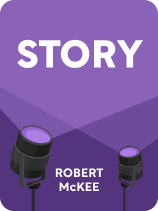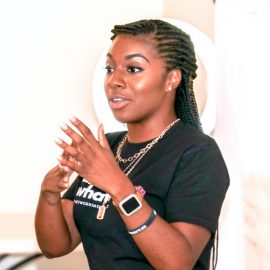

This article is an excerpt from the Shortform book guide to "Story" by Robert McKee. Shortform has the world's best summaries and analyses of books you should be reading.
Like this article? Sign up for a free trial here.
What is a controlling idea? What role does it play in a story? How many should one story have?
A controlling idea, Robert McKee argues, is the glue that holds a story together. In his book Story, he explains why it’s important and how it works. He also shows writers how to connect all of the scenes of a story to the controlling idea.
Continue reading to learn what McKee teaches about this important aspect of a story.
Controlling Idea
What is a controlling idea? Robert McKee says that, for a story to have the most meaningful impact possible on an audience, it must feel like every part of the story is conveying the same meaning. This meaning is your story’s theme, which McKee calls a “controlling idea.” Although some may assume that constraining your story with a single theme limits its meaning, McKee insists that focusing on one central theme gives the audience a multitude of implications to consider. In contrast, trying to include multiple main ideas will muddle your story and hinder the audience in finding meaning.
(Shortform note: McKee advocates constructing your story around a controlling idea to maximize the chance that the audience will find your story meaningful. However, your audience may interpret the theme differently than you intended. Many believe that a text’s inherent meaning overrides any intention on the author’s part, a theoretical framework known as anti-intentionalism. When you release a story into the world, you must accept the fact that it no longer fully belongs to you—audiences may use it to convey their own messages. That said, tightly structuring your story around a single idea as McKee suggests will arguably make it more difficult for audiences to misinterpret your intended theme.)
According to McKee, a controlling idea is always a specific, truthful statement about the world that expresses cause and effect. This cause and effect will typically be the final value change of your story and the reason for that change. For example, the controlling idea of Finding Nemo could be expressed as “Children live fulfilling lives when parents allow them to take risks.”
(Shortform note: McKee’s definition of controlling idea is arguably more useful to writers than more common, broader definitions of theme. Vague, one-word themes like “family” may cause you to write a story that you think is thematically cohesive, but, in reality, isn’t saying anything concrete. For example, if you’re trying to write a story about “family,” you might write a scene about a family reunion and another about the birth of a child, but they don’t have anything to do with each other on a deeper level. In contrast, if your theme is “You achieve personal fulfillment when you make sacrifices for family,” you can immediately spot whether these two scenes are conveying the same cohesive meaning.)
All Value Changes Reflect Theme
How do you connect every scene in your story to a cohesive controlling idea, or theme? Recall that, to create meaning, every scene in your story ends with a value change of some kind. McKee explains that, to create thematic coherence, every scene’s climactic value change should either prove the truth of your theme, or the opposite of your theme, which we’ll call the anti-theme.
Furthermore, McKee claims that your story should alternate between the two, so it seems to prove one idea, then its opposite, over and over until the climax, in which the theme definitively triumphs over the anti-theme. This uncertain tension between two contradictory ideas reflects the complexity of life in a far more believable, meaningful way than if you were to make every scene in your story prove the same point. This allows your story to convey a specific message without ever explicitly telling it to the audience.
For example, if the theme of Finding Nemo is “Children live fulfilling lives when parents allow them to take risks,” its anti-theme is equally present throughout the film: “Children irreversibly hurt themselves when parents are careless enough to put them in danger.” This is most obvious in the Act One climax, when Nemo is abducted, but it’s equally present every time obstacles arise between Marlin and Nemo. Scenes that make it seem like Marlin won’t be able to find Nemo serve as proof that Marlin should have been more protective of his son in the first place.
| McKee’s Thematic Structure Is Dialectic McKee’s concept of thematic storytelling is a form of dialectic—a pattern of reasoning with roots in ancient Greek philosophy. Persuasive writing, a group discussion, or a constructive debate are all expressible in dialectic form. To present an idea as dialectic, you first establish a thesis—this is the popular opinion or basic assumption that most people have. Then, you challenge the thesis with an antithesis—one or more facts that contradict the thesis. Finally, you conclude with a synthesis—a new declaration of truth that takes the facts of both thesis and antithesis into account and resolves any contradictions. (In longer or more complex dialectic, you then challenge the synthesis with an additional antithesis and resolve that logic into a new synthesis until you’ve said everything you need to say.) Because it’s a balanced, fair-minded dialogue, dialectic is a persuasive way to present any idea—which explains why McKee uses it as a powerful tool to express your story’s controlling idea. However, this understanding of dialectic arguably contradicts one of McKee’s conclusions. If stories are dialectic, the theme revealed at your story’s climax will be a synthesis—rather than a theme triumphing over anti-theme, you’re left with a complex view of life arguing that both theme and anti-theme are true to a certain extent. |

———End of Preview———
Like what you just read? Read the rest of the world's best book summary and analysis of Robert McKee's "Story" at Shortform.
Here's what you'll find in our full Story summary:
- A guide for screenwriters on how to write a gripping story
- How to engage an audience on an emotional and intellectual level
- The three-step process for how to write a story







“I’m truly grateful for your support and guidance. You’re amazing!”